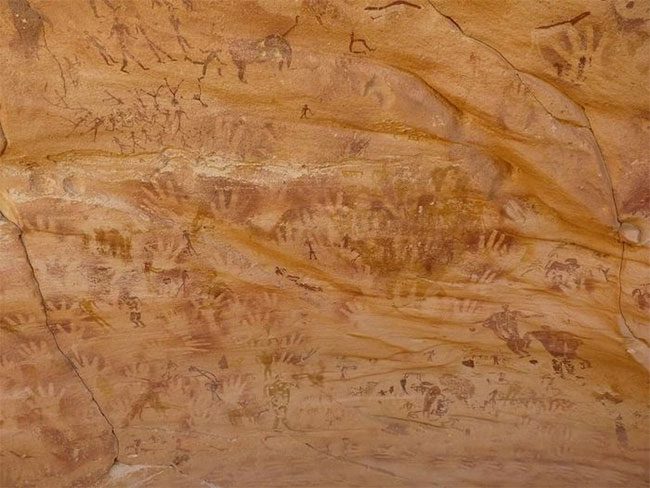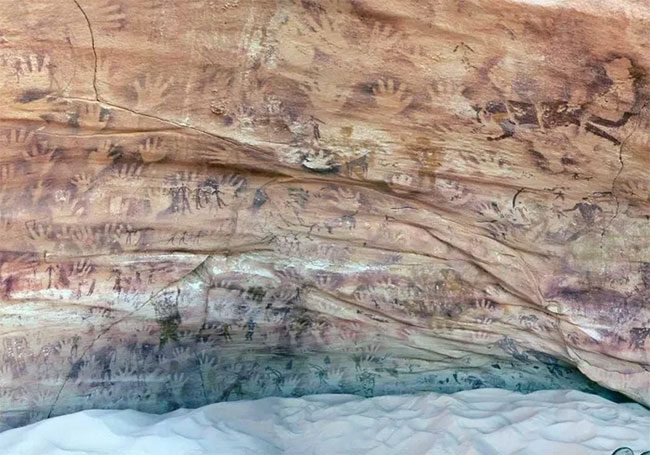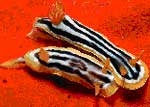According to a study from the Free University of Brussels (Belgium), the hand-shaped markings in the Wadi Sura II cave in the Sahara are not of human origin.
Human-made imprints on rock have always been considered a valuable resource in the field of Archaeology. However, few realize that the creators of most of these handprints are actually children.
A study by the University of Cantabria and the University of Cambridge in 2022 found that up to 25% of the drawings in Stone Age caves in Spain were made by children, including toddlers.

Tiny handprints in the 8,000-year-old Wadi Sura II cave. (Photo: Emmanuelle Honoré).
But nature always holds intriguing surprises. For example, in the case of the 8,000-year-old Wadi Sura II cave, the markings that resemble small children’s hands are not human-made.
Strange “Handprints”
When Wadi Sura II was discovered in the Western Desert of Egypt (a part of the Sahara Desert) in 2002, researchers were astonished by the thousands of markings inside. In addition to depictions of wild animals, humans, and headless beings, this cave also features hundreds of marks resembling human hands. These peculiar markings led to Wadi Sura II being dubbed the “cave of monsters.”
Even more unusual was the presence of 13 markings resembling infant hands. In fact, one print of a “baby” hand was nestled within a pair of adult hands.
Before the discovery of Wadi Sura II, small handprints and footprints had been found in various caves worldwide, but they had never been seen in the Sahara—a region known for its extreme climate.

These small “handprints” are not human-made. (Photo: Emmanuelle Honoré).
However, according to a 2016 study from the Free University of Brussels (Belgium), the small hand-shaped markings in the Wadi Sura II cave in the Sahara are not human.
Unveiling the Mystery
In 2006, anthropologist Emmanuelle Honoré from the Free University of Brussels visited Wadi Sura II and noticed something unusual about the small handprints.
“They are much smaller than infant hands, and the fingers are too long,” Honoré explained.
Feeling skeptical, Honoré decided to compare the size of the cave markings with the hands of infants and even preterm babies from a hospital in France. The results indicated a high probability that these “handprints” in the “monster cave” were not made by humans.
Based on the position, contours, and shape of the “fingers,” the research team concluded that these “hands” were very flexible and jointed, ruling out the possibility that they were created from a mold made of wood or clay.

The tiny “handprints” closely resemble the forelimbs of desert monitor lizards. (Photo: Live Science).
Honoré initially suspected they might be monkey footprints, but comparisons proved this wrong. Researchers at the Natural History Museum in Paris suggested that Honoré consider reptiles. As a result, the “baby handprints” were found to closely resemble the forelimbs of desert monitor lizards, which still inhabit the Sahara today. Honoré determined that the “handprints” on the rock were made by a monitor lizard, along with at least two adult ancient humans.
Honoré’s findings show that not only humans but also animals can create rock art.
“We often think of nature as something separate from humanity, but through this discovery, it becomes clear that humans are just a part of the vast natural world,” Honoré said.





















































